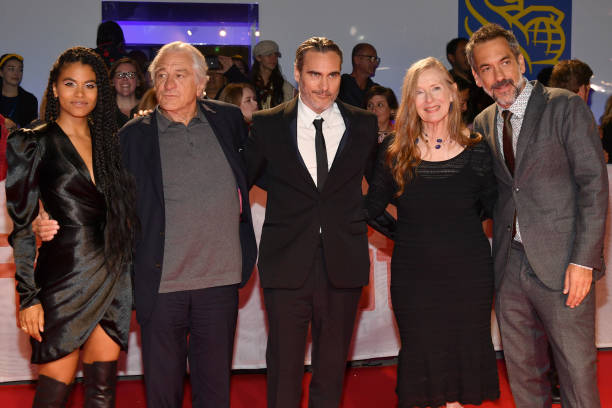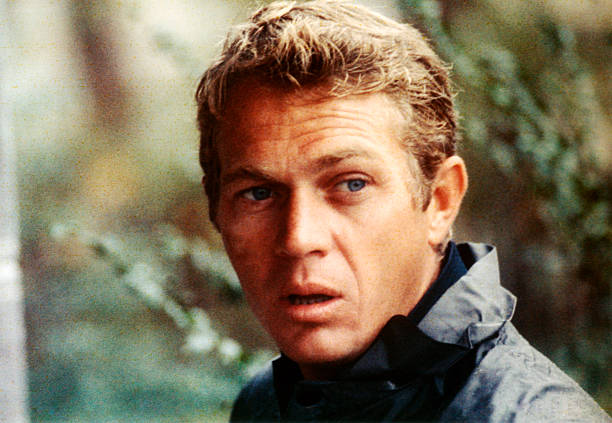It’s Jean-Claude Van Damme calling. He asks, “How are you?” and before he can hear an answer, there’s a commotion on his end—phone-fumbling sounds; a tiny Chihuahua freaking out; Van Damme’s wife, Gladys Portugues, laughing; his own low chuckle.
![]()
“Ah la la,” sighs Van Damme, back on the line. It sounds like French for What can you do?
“I’ve got my dog next to me on the table,” he explains, “and we just got back from the Caribbean”—again the dog yaps, and Van Damme says, “Lola, stop it” in a firm, don’t-test-me tone—“and she is so jealous of my wife, it’s unbelievable.”
![]()
Lately Van Damme and Lola have also been in France, Belgium, Italy, and Monaco. “So Mademoiselle Lola is now spoiled, because she’s been going from hotel to hotel.” He speaks to the dog one more time, his voice high and sweet—“Right, Lola?”—and then chuckles, as if delighted to know there’s a creature in the world that loves him this much. Heh heh heh heh.
There’s another explosion of tiny barks. Van Damme laughs. “Lola. Stop it.” He tries again, more sternly. “Lola. Stop. Stop. Stop.”
![]()
Van Damme turned 60 last October. In his time on this planet, he’s been a nobody from Belgium, a global box-office sensation, a coke-torqued tabloid train wreck, and a ’90s-kitsch punchline. When he was 38, he told interviewers sincerely that he believed he’d be dead of a massive heart attack by 50—and this was after he kicked the drugs, recommitting to work and family and fitness and Gladys, who’d cared for their son and daughter, Kristopher and Bianca, during the years Van Damme spent letting his demons drive.
Van Damme and Gladys got divorced in 1992, as his wild years ramped up, but they remarried by the end of the decade, making Gladys his fifth wife as well as his third wife. If not for her? “Impossible for me to talk today,” Van Damme says. Meaning he wouldn’t be alive. His implosion was well-documented—gossip columns and leaked divorce-court depositions painted the usual picture of an uncontrollable superstar enslaved by his own appetites. Writer-director Steven E. de Souza told The Guardian that Van Damme was “coked out of his mind” on the set of 1994’s Street Fighter, when he could be persuaded to show up.
![]()
He’d cleaned up by 2008, when he starred in JCVD, playing himself as a faded action-movie star trapped in a hostage situation at the post office. The film is a comedy, but in its most astounding sequence, a crane lifts Van Damme out of the scene he’s in and into the rafters of the set, where he speaks directly to the camera—or possibly through it, to God—for six tearful, mostly improvised minutes, in French, about the luxury-hotel loneliness that led him to drugs, about his years of self-destruction and addiction and the guilt he still carries with him. He speaks of his former self as Van Damme, la Bête—the Beast—and seems convincingly and maybe irreparably broken as a person. “I got out of it,” he says at one point. “But . . . it’s all there. It’s all there.”
![]()
VAN DAMME IS AN undisputed icon of action cinema, a living cautionary tale about the dangers of believing your own hype, and a symbol of cheeseball ’90s excess. Since JCVD, he’s continued walking a path of self-awareness about all of this, winking knowingly at the more swole-headed aspects of his cinematic legacy in projects like the brilliant Amazon Studios meta-comedy series Jean-Claude Van Johnson—Van Damme in Confessions of a Dangerous Mind mode, playing an aging action star who’s secretly
a superspy, among other fun-house-mirror versions of himself—and the 2013 Volvo ad in which he does his trademark split between two moving semi trucks while Enya sings “Only Time.”
Perhaps you’ve seen GIFs of Van Damme dancing in voluminous khakis and a suspender-strapped tank top in 1989’s Kickboxer. So has Van Damme, and at jcvdshop.com you can buy a hoodie or a coffee mug with a dancing Jean-Claude on it—and you can also see present-day Van Damme modeling some of these items, cosigning our ironic enjoyment.
Maybe you saw him dancing again last year, mixing up martial arts and early ballet training and freestyle dad-at-the-rave moves in EDM duo AaRON’s “Ultrarêve” video, directed by his daughter. Perhaps his disarmingly sage and serene social-media presence has come across your timeline—inspirational quotes on the importance of patience, accented with context-appropriate Bloodsport screenshots.
![]()
Maybe you haven’t seen all or any of the 30-plus feature films and TV-show appearances he’s made since the year 2000, but the later part of the career’s going well, too. Van Damme’s name can still get an action movie made, so there is always a script with a title like 6 Bullets or Assassination Games or The Hard Corps or Replicant that calls for Van Damme to play a guy named something like Samson Gaul or Vincent Brazil or Philippe Sauvage or Edward Garrotte.
These days, it’s easier than ever for aging-but-still-recognizable action stars to grab top billing and a quick paycheck in exchange for a few glorified-cameo minutes of screen time in movies that can be misleadingly packaged to fool some sucker at a Redbox kiosk. But Van Damme actually shows up and stars in his movies, even if he keeps his stunt doubles slightly busier than he used to, and he brings to the work a weathered, actorly gravitas that might surprise you if you know him only as the dancing fool from Kickboxer.
That’s how he’s spent the past decade or so, performing a split bridging viral silliness and the solemnity of the action hero in winter. But his new movie—his first project for Netflix—doesn’t slot comfort comfortably into either category. It’s called The Last Mercenary. He plays a former secret agent pulled back into the game, does the splits, and kicks people in the face, per tradition. But he also struggles to connect with a long-lost son, nails a few deadpan moments, and slips on a tux to pull a heist—and he does it all in French, a language he grew up speaking but has rarely acted in. There are a few meta jokes about Van Damme’s Van Damme-ness, but mostly it’s JCVD pulling off the kind of warm and goofy action comedy he’s never had the chance to try before.
This is a new zone for Van Damme, who until now has done his best work as an actor in subdued, haunted-man roles with a narrower emotional register. “He’s not like that in real life,” says The Last Mercenary director David Charhon, a longtime fan who wrote the film with Van Damme in mind. “He’s sparkling, luminous, funny. I said, ‘It’s amazing that no one’s shown him in a movie how he is!’ ”
THE CARIBBEAN VACATION was his first real time off in years, Van Damme says.
“I bought a mini motor yacht,” he says. “My little Lolita, my dog, and a captain and a stewardess, and you go from island to island. You anchor, you swim. Go eat some grilled fish. Come back at night. There’s no sound. No paparazzi. No phone, because WiFi is very weak.”
They were out there three months—just the old man, his Chihuahua, and the sea.
“Every day I was having the ocean in front of me,” Van Damme says. “Which is basically everything. It’s beautiful, but it’s nothing. So you see infinity. You have time to see everything and nothing. And to think about something else. To think about: What else should I do in my life to be completed?”
When Van Damme speaks of his own death, this is how he speaks of it—calmly, as if it were an item pending on the schedule. It keeps coming up, though, almost out of nowhere. At one point, he pauses midsentence; says, “Don’t worry—it’s not Covid”; then blows his nose hard, a honk that echoes through the room. When he returns to the phone, he’s suddenly talking about a routine surgical procedure he has coming up, his anxiety about it. He worries only about not being here for his family.
“I’ve made some good money. I’ve got some properties. I want to make sure my children understand the value of everything. And then I’ve got no problem to go. I’ve been around the world so many times.”
He has arrived at this point meditatively.
“Makes me feel good, by the way—they say most successful men are from 60 to 70,” he says. “Second position is from 70 to 80”—heh heh heh—“if I can make it, agewise.”
By “successful,” he means happy. Social science calls this the U-curve, a reference to the way happiness tends to dip at midlife and rebound when approaching retirement age. What “retirement age” means in a Van Damme context is subjective. Sly and Arnold appear poised to work through their 70s, after all, and so does Jackie Chan. And besides, Van Damme’s been defying the odds for years.
In Belgium in the 1980s—when he was a former Mr. Belgium and the holder of a few karate-tournament titles—he opened a gym, which he named California Gym, after a place he’d never been. He ensured its success by placing “all the beautiful machinery, the chrome ones, for the ladies, in front of the window, so people saw all these beautiful women training.” He made a pile of money, put it in the bank in his father’s name so he couldn’t touch it, and moved to Los Angeles with only $3,000 in his pocket, figuring if he couldn’t make it with $3,000, he wouldn’t make it with $5,000, either.
In L. A., five years passed. Van Damme learned English, slept in his car, delivered pizzas, laid carpet, drove a limo, and racked up mostly ignominious screen credits—blink and you’ll miss him as a unitard-clad Venice Beach dancer in 1984’s Breakin’. He carried around karate magazines with his picture on the covers in case he ran into a producer who could give him a job. Of course, that’s not how it works, but it ended up working for him.
The story is that Van Damme saw the producer Menahem Golan, a cofounder of Cannon Films, at a restaurant. He showed how high he could kick by kicking up and over Golan’s head, and that’s how Van Damme booked Bloodsport.
This is more or less true, but it leaves out the part with Van Damme calling and calling and hearing nothing back from Golan, coming close to giving up, and sitting in his apartment thinking, It’s over; I cannot do more—which is when his phone rings. He’s summoned to Golan’s office. Golan says to his secretary, “Karen, bring me Bloodsport,” and Van Damme is handed the script that will change his life, no silver platter necessary.
In the film, based on the too-wild-to-fact-check recollections of a novelist, martial artist, and self-professed ex–CIA operative named Frank Dux, Van Damme plays a soldier who goes AWOL to fight in a secret, full-contact martial-arts tournament in Hong Kong. It’s as if the script had been crafted for the express purpose of creating the need for a Jean-Claude Van Damme type of actor.
Released in 1988, Bloodsport reportedly made $50 million on a $2 million budget, and by the early ’90s, Van Damme was a bona fide movie star—playing twin Van Dammes in Double Impact, battling Dolph Lundgren as a zombie-cyborg Vietnam vet in Universal Soldier.
He was a meaner, prettier Arnold 2.0 with a rockin’ mullet, unafraid to bare his ass onscreen (or brag about his ability to crush a walnut with his glutes). In 1991, dressed in Patrick Bateman suspenders like a cocky junk-bond trader, Van Damme sat with Arsenio Hall, who asked him to look into the camera and celebrate his newfound heat by saying, “Yo, I’m large, baby.” Grinning, Van Damme turned to the camera and said something that sounded like “Yo, I’m enlarged, baby.”
After Timecop made more than $100 million in the mid-’90s, Universal offered him $12 million for three more films. Van Damme—now enlarged, yo, at least in his own mind—asked for $20 million. Since he had built himself up from nothing, now you could tell him nothing. So went the next few years—gluttony, ego, bad choices. A $10,000-a-week cocaine habit. A tabloid-ugly divorce from his fourth wife, Darcy LaPier. Reported DUIs, an attempt at rehab, an eventual diagnosis of bipolar disorder, of which much of the foregoing was a symptom.
By not dying in the ’90s, he’s lived to watch the world become less interesting, a process that seems to have started for him even before all human interaction shrank to the size of a Zoom window. “I’m kind of—how do you say?—blasé, kind of bored,” Van Damme says. “Because everything now, it’s on the screen.” If this is how life’s going to be from here on out, he’s glad his work allowed him to hang out in Kazakhstan and Indonesia before everything changed. But he’s also hopeful about the future.
“Every two-thousand-something-five-hundred years, we are changing constellations,” he says. “In all the biblical books, the Koran or the Torah or the Gospel, they have the fish as a symbol. And now we are entering the constellation of Aquarius—it’s a totally different cycle of life, if you understand cosmologies. It’s very important, this coming couple of years, in terms of the human cycle.”
And there’s the work, which has become about conserving energy until just the right moment. “Every time I can sit somewhere, on the set, not just stay on my feet, I save everything I can save,” he says. “So what you have to do is save the car. Don’t drive that car to the market. Drive another one. Only drive this one on Sunday.”
He owes it to Gladys to keep kicking. “If not, I will be rotting at home,” he says. “Not as a human, but mentally. And my wife will feel so bad to see me this way. She knows I like to construct.”
He is aware of the Bloodsport reboot, long in the works. “If they don’t do it, they are crazy,” he says. But his interest is elsewhere. There’s a film he wants to make called Headlock, which he says will be a martial-arts epic with whiffs of Rocky. The script is by Oscar-winning Green Book cowriter Nick Vallelonga. Van Damme explains the story and its visuals in a few impossible-to-follow sentences—something about the color red increasing in intensity, about his character waking from a coma and a twist involving a second coma.
At the end, he says, “I die for love. Oh my God, what a movie! I know they want to [remake] Bloodsport, but they’re gonna put—sorry for the expression—tits and ass and all that bullshit. It doesn’t belong to me anymore. I’m 60—I want to do something beautiful.”
This story appears in the July 2021 issue of Men’s Health.


